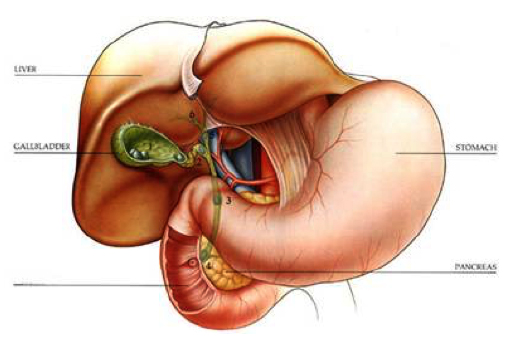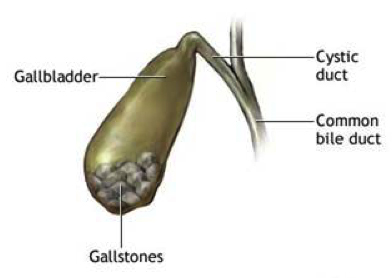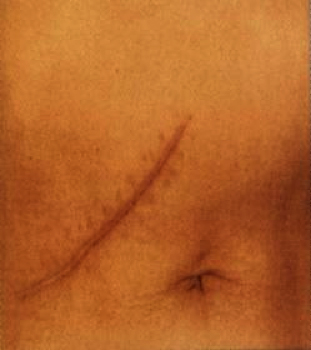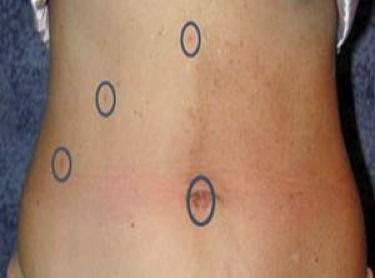The gallbladder is an organ that rests beneath the liver. Its main purpose is the storage and concentration of bile. Bile is made in the liver and aids in the digestion of food. Certain hormones stimulate the gallbladder to squeeze after a meal, releasing the stored bile into the intestines. Removal of the gallbladder does not cause any impairment in the digestion of food in most people, as the liver will still continuously make bile.
The removal of the gallbladder is called a cholecystectomy. It is one of the most common surgical procedures performed in the United States. The procedure is now routinely done laparoscopically and is often an outpatient procedure. Laparoscopic cholecystectomy allows for less scarring and pain after surgery, and a quicker recovery to normal activities. The traditional, open procedure requires a 5-7 inch incision, while the laparoscopic approach typically utilizes four small incisions.

What causes gallbladder problems?
Gallbladder problems are usually caused by gallstones. Gallstones are composed of cholesterol, calcium salts and bile pigments. The medical term for gallstones is cholelithiasis. Gallstones can block the flow of bile out the gallbladder, which can lead to pain, inflammation, and infection. Pain from a gallstone attack, or biliary colic, is usually located in the right-upper portion of the abdomen. These attacks are most commonly brought on by foods rich in fats, although other foods can cause an attack as well.

Gallstones can cause obstruction and inflammation of the gallbladder, leading to a condition called acute cholecystitis. This is marked by abdominal pain, fever, nausea and vomiting. Jaundice can occasionally occur as well. In chronic cholecystitis, there is long-term presence of gallstones and inflammation which can cause the gallbladder to become shrunken and hard. It can lose the ability to concentrate and store bile.
Gallstones can also cause other serious medical conditions. The gallstones can travel into the duct connecting the liver and intestines called the common bile duct. This can cause jaundice or yellowing of the skin. If the duct becomes blocked, a serious infection can develop called cholangitis. Some signs of this condition are jaundice, fever, and abdominal pain. This is a medical emergency and requires immediate care. In addition, gallstones can block the pancreatic duct and cause pancreatitis. This condition is marked by intense abdominal and back pain, nausea and vomiting. Pancreatitis can become a serious condition and it generally requires medical care.
How are these conditions treated?
It is unclear why certain people develop gallstones. There is no known means of preventing gallstones, and the medical treatment of gallstones is not very successful. Symptoms will generally continue or recur unless the gallbladder is removed. Gallstones causing biliary colic (pain), cholecystitis, or other complications are treated with a cholecystectomy. This can usually be performed laparoscopically and often as an outpatient procedure. An abdominal ultrasound is the most common method to detect gallstones. The work-up also typically involves laboratory work and the standard preoperative medical evaluation. Certain conditions may require a more extensive work-up.

Incision from open cholecystectomy

Incisions from laparoscopic cholecystectomy (circled)
We will be happy to discuss with you if you are a candidate for laparoscopic removal of your gallbladder.
Johns Creek surgery Center located in Johns Creek, GA, attracts patients from all over the metro Atlanta area and beyond including Macon, Sandy Springs, Alpharetta, Milton, Roswell, Duluth and Marietta, GA. Our board certified experts perform a variety of surgical procedures for patients in a comfortable, caring environment.
